100000
Type of resources
Available actions
Topics
Keywords
Contact for the resource
Provided by
Years
Formats
Representation types
Update frequencies
Scale
Resolution
-

A collection of small-scale non-series maps which offer whole-country coverage of the United Kingdom 1856-2013. Included in the collection are geological, tectonic, structural, mineral resource and geophysical maps, together with a small number of historical facsimile maps. Key geological maps included in the collection which ran to many editions are Geology of the British Islands 1:584 000 and the Geological Map of Great Britain 1:625 000. These maps are hard-copy paper records stored in the National Geoscience Data Centre (NGDC) and are delivered as digital scans through the BGS website.
-
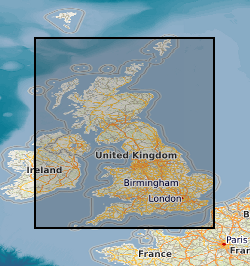
This layer of the GeoIndex shows the localities for which details of identified fossil specimens in the BGS Biostratigraphy Museum are databased. Only Ordovician and Silurian specimens listed currently. Samples and taxonomic identifications will be listed and will in future be able to be queried using the query-by-attribute tool to the right of the map. See also Fossil Localities. Material is available for inspection on application by e-mail; it is free for academic research but is charged for commercial work. Specimens are sometimes available for loan to bona fide academics.
-
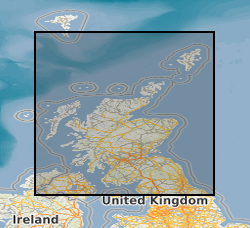
The dataset describes the potential of superficial deposit aquifers across Scotland to sustain various levels of borehole water supply, based on four productivity classes: high; moderate to high; moderate; and a category to signify that a deposit is 'not a significant aquifer'. All superficial deposits aquifers in Scotland are assumed to have primarily intergranular groundwater flow. The dataset is a tool to indicate the location and productivity of superficial deposit aquifers across Scotland. It may have several uses, including in policy analysis and development; to prioritise aquifer and site investigations; to inform planning decisions; and to improve awareness of groundwater in general. The complexity and heterogeneity of geological formations means that the dataset is only a guide. It is designed to be used at a scale of 1:100,000, and not to assess aquifer conditions at a single point. Latest version : Superficial Aquifer Productivity Scotland version 2
-
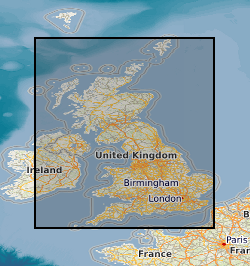
The UK Onshore Geophysical Library was established in 1994 in conjunction with the Department of Trade and Industry (DTI) and the UK Onshore Operators Group (UKOOG). The Library manages the archive and official release of seismic data recorded over landward areas of the UK. By agreement with the DTI and HMSO, the Library operates as a registered charity, funded by revenues raised from data sales and donations, with the long term objective of bringing all available UK onshore digital seismic data into secure archival storage, whilst providing efficient access to all interested parties. BGS has access to the data at cost of copying only for science budget work. Data index on the BGS Geoscience Data Index.
-
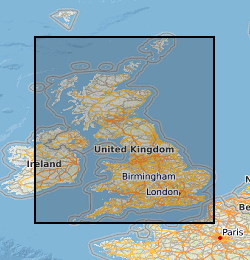
A collection of hydrogeological maps created by the British Geological Survey between 1967 and 1994. The maps in the collection cover aspects of groundwater availability, exploitation and quality, and were published at various scales from 1:25 000 to 1:625 000. A hydrogeological map is a specialized type of map that illustrates the distribution and characteristics of hydrogeological features in a particular area. Hydrogeological maps of the UK provide information on major aquifers, including geological and lithological information, surface drainage systems and water quality issues. The 23 maps show information on surface water features, the three dimensional geometry of aquifers, groundwater levels, abstractions and quality including saline intrusion in varying amounts of detail. They range in scale from 1:625 000, for the national map of the hydrogeology of England and Wales, down to 1:25 000 for some of the smaller regional maps. These maps are important tools for understanding and managing groundwater resources, as well as for addressing water-related environmental issues. These maps are hard-copy paper records stored in the National Geoscience Data Centre (NGDC), and are delivered as digital scans through the BGS website.
-
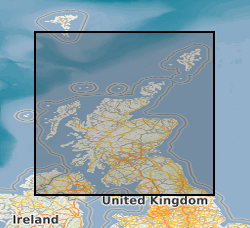
The dataset describes the relative vulnerability of groundwater to contamination across Scotland, by means of five relative classes ranging from 1 (lowest vulnerability) to 5 (highest vulnerability). The dataset is a screening tool that can be used to show the relative threat to groundwater quality from contamination across Scotland. It can provide guidance on the vulnerability of groundwater at a regional scale, highlighting areas at comparatively higher risk of groundwater contamination, and can help indicate the degree of specific site investigation required for a new development or activity. It is designed to be used at a scale of 1:100,000 and should be regarded as a tool to aid groundwater risk assessment rather than a complete solution. Latest version: Groundwater Vulnerability Scotland version 2
-
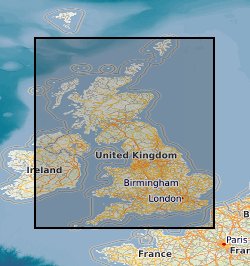
The map shows the localities of significant fossil samples, either collected by BGS Staff, or donated by individuals and institutions. The BGS fossil collections contain over 2 million specimens, including a sizeable quantity of type, figured and cited material. Since a small number of fossil locations are confidential, you are unable to view this dataset at large scales. However, if you send a data enquiry, such information may be made available. Enquiries are normally free, but a charge may be levied depending upon the time taken; users will be notified in advance. Material is available for inspection on application by e-mail. Specimens are sometimes available for loan to bona fide academics.
-

This mineral resource data was produced as part of the Mineral Resource Map of Northern Ireland via a commission from the Northern Ireland Department of the Environment. The work resulted in a series of 21 data layers which were used to generate a series of six digitally generated maps. This work was completed in 2012 with one map for each of the six counties (including county boroughs) of Northern Ireland at a scale of 1:100 000. This data and the accompanying maps are intended to assist strategic decision making in respect of mineral extraction and the protection of important mineral resources against sterilisation. They bring together a wide range of information, much of which is scattered and not always available in a convenient form. The data has been produced by the collation and interpretation of mineral resource data principally held by the Geological Survey of Northern Ireland and was funded via a commission from the Northern Ireland Department of the Environment. These layers display the spatial data of the mineral resources of Northern Ireland. There are a series of layers which consist of: Bedrock: Clay, Bauxitic clay, Coal & Lignite, Coal – lignite proven, Conglomerate, Dolomite, Igneous and meta-igneous rock, Limestone, a 100m buffer layer on the Ulster White Limestone, Meta-sedimentary rocks, Perlite, Salt, Sandstone and Silica Sand. Superficial (unconsolidated recent sediments) : Sand & gravel and Peat. The data except for the salt and proven lignite resource layers was derived from the 1:50 00 and 1:250 000 scale DigMap NI dataset. This version of the data retains the internal geological boundaries which are dissolved out in the accompanying dissolved version. A user guide 'The Mineral Resources of Northern Ireland digital dataset (version 1)' OR/12/039 describing the creation and use of the data is available.
-

The map shows the localities of significant fossil samples, either collected by BGS Staff, or donated by individuals and institutions. The BGS fossil collections contain over 2 million specimens, including a sizeable quantity of type, figured and cited material. Since a small number of fossil locations are confidential, you are unable to view this dataset at large scales. However, if you send a data enquiry, such information may be made available. Enquiries are normally free, but a charge may be levied depending upon the time taken; users will be notified in advance. Material is available for inspection on application by e-mail. Specimens are sometimes available for loan to bona fide academics.
-
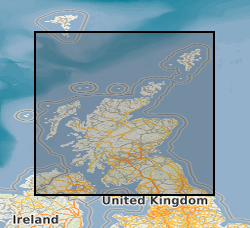
The dataset describes the potential of bedrock aquifers across Scotland to sustain various levels of borehole water supply, and the dominant groundwater flow type in each aquifer. There are five aquifer productivity classes: very high, high, moderate, low and very low, and three groundwater flow categories: significant intergranular flow; mixed fracture/intergranular flow; and fracture flow. The dataset is a tool to indicate the location and productivity of bedrock aquifers across Scotland. It may have several uses, including in policy analysis and development; to prioritise aquifer and site investigations; to inform planning decisions; and to improve awareness of groundwater in general. The complexity and heterogeneity of geological formations means that the dataset is only a guide. It is designed to be used at a scale of 1:100,000, and not to assess aquifer conditions at a single point. Latest version: Bedrock aquifer productivity Scotland version 2
 NERC Data Catalogue Service
NERC Data Catalogue Service